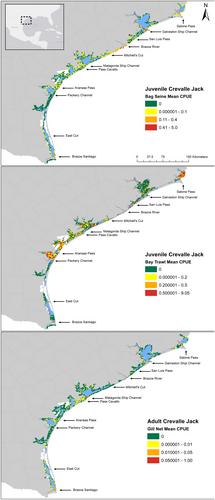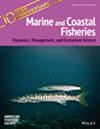Crevalle Jack Caranx hippos are important coastal predators and support an increasingly popular catch-and-release sport fishery. However, population declines have recently been perceived by stakeholders in parts of the species' range. Here, we aimed to provide distribution and harvest trends for Crevalle Jack in the northwestern Gulf of Mexico.
Long-term fishery-independent and fishery-dependent data were collected by the Texas Parks and Wildlife Department from 1983 to 2021. Bag seine, bay trawl, and gill-net samples were collected in conjunction with angler creel surveys. Crevalle Jack that were observed in fishery-independent sampling were used to assess patterns in both juvenile and adult relative abundance, distribution, and seasonality. In addition, boosted regression tree models were used to highlight important predictors of Crevalle Jack presence. Crevalle Jack harvest observed during angler surveys was used to describe the fishery, including differences in inshore and offshore catch patterns. Relative abundance of both juveniles and adults was variable across years but displayed no trend throughout the time series.
Crevalle Jack of all sizes were found within inshore waters, with subadults and large adults particularly reliant on estuarine systems. Recruitment peaked in early summer, with juveniles occupying all major estuaries along the coast. Shifts in recruitment were evident in bag seines, as the mean date of catch trended almost 2 weeks earlier over the study period. The Crevalle Jack fishery was spread across inshore and offshore waters, with significantly larger fish harvested offshore during summer. The majority of anglers who harvested Crevalle Jack stated that they were specifically targeting other species, thus supporting the notion that the targeted fishery is mainly catch and release.
As Crevalle Jack declines have been noted elsewhere in the species' range, these results could help to inform future management decisions in Texas.



